#abstract ferns
Explore tagged Tumblr posts
Text
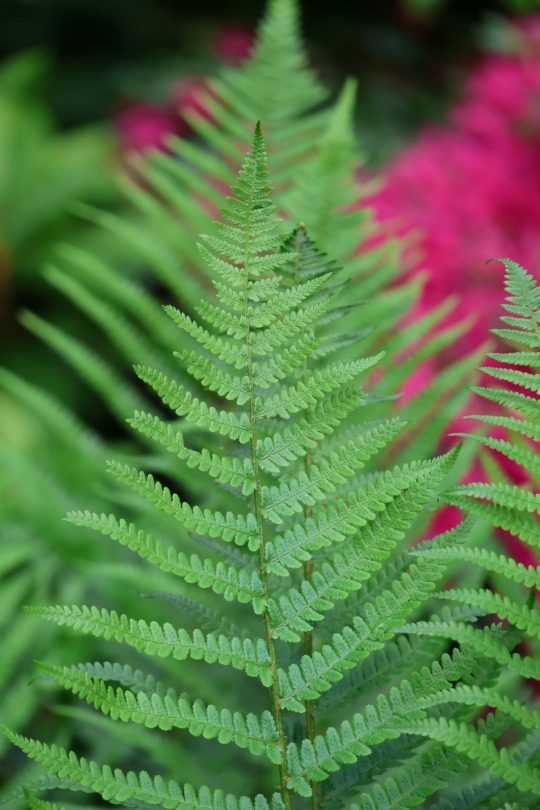
Fern
#photographers on tumblr#nature#flora#spring#green#primavera#verde#fern#ferns#gardening#garden#abstract#original photographers#original photography#vertical
291 notes
·
View notes
Text
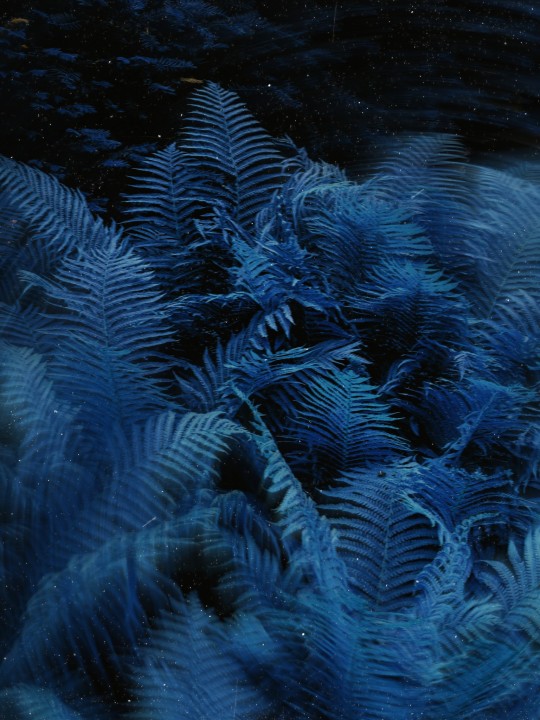
🌿💙
#photography#aesthetic#tumblr#beauty#canon photography#post canon#travel#this is canon#canon#film photography#fern#original photographers#amatuer photography#artists on tumblr#photographers on tumblr#naturecore#nature photography#abstract#nature#blue#camera#cottagecore#gardening#garden#35mm film#summer#photoshoot#2025#my art#digital artist
21 notes
·
View notes
Text
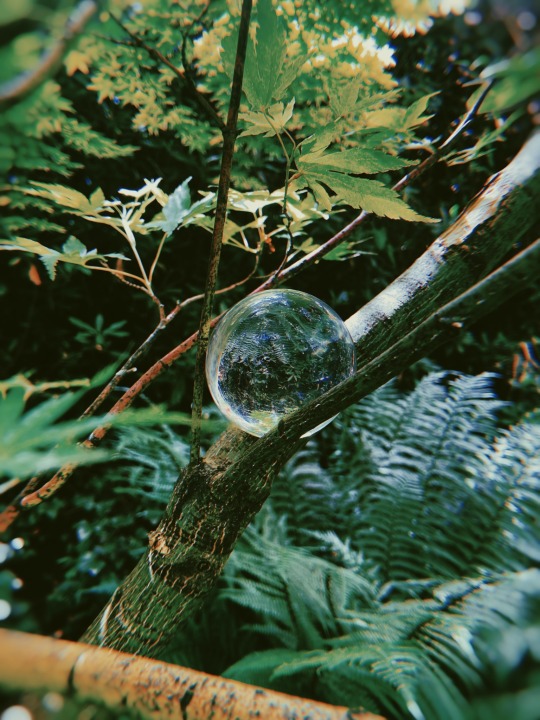
förēst ōräclë .:::. @roseeadsdesign
source
#nature#Fern#Forest#forestcore#forest nymph#trees#ancient#natureblr#Crystal#crystals#photography#abstract photography#dark academia#dark cottagecore#spiritual#spirituality#witchcraft#earthcore#earth energy#energy#earth activation#35mm film#35mm#grainisgood#green aesthetic#magick#magic#spiritualpath#spiritualguidance#greenery
473 notes
·
View notes
Text

SAMIA HALABY, "Fern," 1974,
Color pencils on cream wove paper,
516x710 mm / 20 1/2x27 3/4 inches.
Mrs Halaby (born 1936) is a Palestinian artist, activist and scholar known for her abstract painting. Born in Jaffa, she left in 1948 fleeing Palestine and eventually settled in the United States.
She studied at the University of Cincinnati and Indiana University, Bloomington before beginning her artistic career.
Her works are characterized by colorful geometric compositions inspired by nature and Islamic architectural forms, as well as Soviet Constructivism and other European avant-garde movements.
Her work is in included in the permanent collections of the Guggenheim Museum, New York, the Chicago Institute of Art, Institut Du Monde Arabe in Paris, and The National Gallery of Art in Washington, D.C., among others.
#art#abstract#abstraction#painting#forms#abstractart#palestine#palestinian art#pencil#fern#samia halaby#activism#jaffa#composition#geometric#colorful#constructivism#avant-garde
73 notes
·
View notes
Text

Christmas Fox
#art#illustration#artist#drawing#artwork#draw#abstract#flowers#cute#abstractart#fox#christmas illustration#snow#fern
7 notes
·
View notes
Text
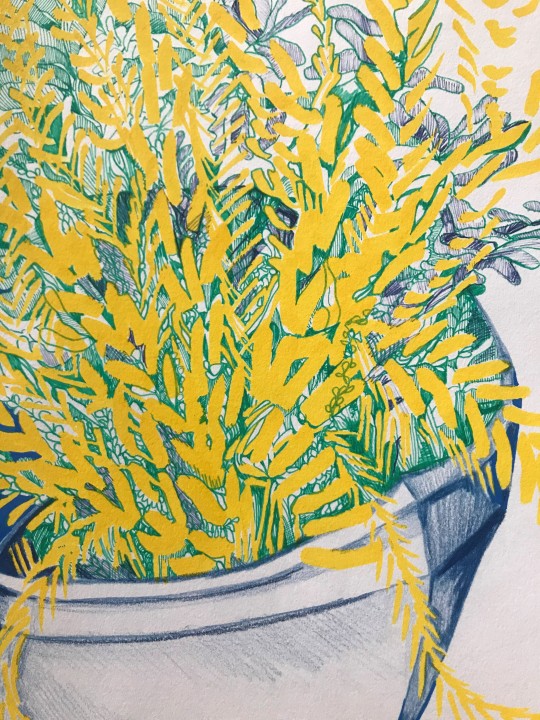
at the time i finished this sketch, i wrote: "still here. I’m thankful that New Orleans is so warm and welcoming. It will always be home. I am relieved to spend so much of this quarantine time outside. Here’s a sketch of a fern." 2020
#sarabahatart#art#drawing#color#mixed media#painting#colored pencil#marker#ink#fern#nature drawing#abstraction#modern drawing#artistic process#sketch#sketchbook#fern drawing#sapshit
2 notes
·
View notes
Text

played around with brushes for fun I have no idea what poses to do lately please don't mind that my drawings all have similar poses sometimes.. ⊙_⊙)
12 notes
·
View notes
Text
Trying to embroider my graduation cap for the first time anyone got ideas?
#Genuinely considering abstract fanart abt the turtles or the new ninjago source symbols idk#Other ideas im running w:#Lunar moths bees the night sky ocean beach#Yellow daisies and megamendung clouds#But also ghosts and ferns#Solar eclipse?#kopichats
2 notes
·
View notes
Text

It’s your move
2 notes
·
View notes
Text
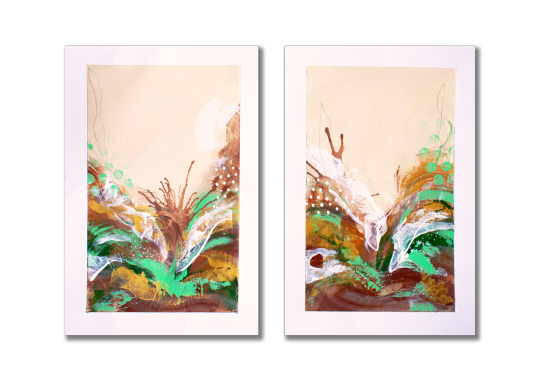
Fern I & II
2024 | 9" x 12" (6"x9" individually) | Acrylic, Oil Pastel, and White Ink on Paper
#abstract#abstract expressionism#painting#art#artists on tumblr#original work#original art#artist#aesthetic#my art#contemporary art#abstract art#fern#green brown#yellow
0 notes
Text
Silver Fern & Tui
Kiwiana, Silver Fern & Tui Bird
New Zealand has many native flora and fauna. We are blessed with some of the most stunning native bush in the world. We live between native bush and the sea, so I get to go bush walking when ever I want to. I could load up 100 pics 🙂 of my walks if i wanted to, but i wont , (collective sigh of relief lol)… here are 3 to show you where i get my inspiration from……… ….to then paint things like…

View On WordPress
#abstract#acrylic#aotearoa#art#artist#bird#blue#bush#canvas#dark#fauna#feathers#fern#flora#frond#kiwi#kiwiana#kiwiart#koru#light#mamaku#maori#maoriart#native#new#newzealand#original#painting#ponga#prints
0 notes
Text

Fern
#photographers on tumblr#nature#flora#spring#green#primavera#verde#fern#ferns#gardening#garden#abstract#original photographers#original photography#vertical
340 notes
·
View notes
Text
Writing Notes: Fragrance Classification

Citrus
lemon, sweet orange, mandarin, grapefruit, lime, lemongrass, bergamot, citral, dihyromyrcenol
Floral
rose, jasmine, ylang ylang, muguet (lily of the valley), tuberose, orange blossom, violet, gardenia; types of floral scents: aldehydic, fruity, white, transparent ozonic, spicy
Oriental
vanilla, benzoin, labdanum, coumarin, civet, tolu balsam, oakmoss, musks, spices, woods; types of oriental scents: gourmand, woody, floral
Chypre
bergamot, oakmoss, labdanum, patchouli, vetiver, benzoin, castoreum
[The chypre family is derived from materials traditionally found on the island of Cyprus (Chypre, in French), which was a hub of the aromatics trade for many centuries. In 1917, Francois Coty, who was originally from Corsica, created a fragrance called Le Chypre based on bergamot, oakmoss, labdanum, jasmine, and animalic musks. Although no longer produced today, there are echoes of Le Chypre in all fragrances in this category.]
Fougére
coumarin, lavender, oakmoss, citrus
[This category is named after a specific perfume: Fougére-Royale (meaning royal fern). Created in 1882 by Paul Parquet, chief perfumer at Houbigant, Fougére Royale was originally sold as a toilet soap. It was a “fantasy” accord in that it was made to imitate the aroma of an odor-less fern. These days we’re used to fragrances evoking imaginary flowers or other abstract themes, but at the time this “fantasy” perfume was seen as ground-breaking.]
NOTE
Classifying fragrances into families makes it easier to understand their composition and also helps the fragrance buyer work out what they prefer.
It is quite likely that if you are fond of a particular fragrance, then you will also like others in the same category. Fragrances fit within particular families due to their unique combinations of ingredients.
It may be fairly straightforward to work out if a fragrance is a citrus or a single floral note, but some are a little more tricky without some technical knowledge.
Other than smelling, knowing the vocabulary used in perfumery deepens your understanding and will help you to recognize different scents more easily.
Source: Perfume: The Art and Craft of Fragrance by Karen Gilbert
#perfume#writing reference#writeblr#dark academia#spilled ink#writers on tumblr#writing prompt#poets on tumblr#literature#creative writing#writing inspiration#writing ideas#light academia#fragrance#nature#konstantin somov#writing resources
288 notes
·
View notes
Text
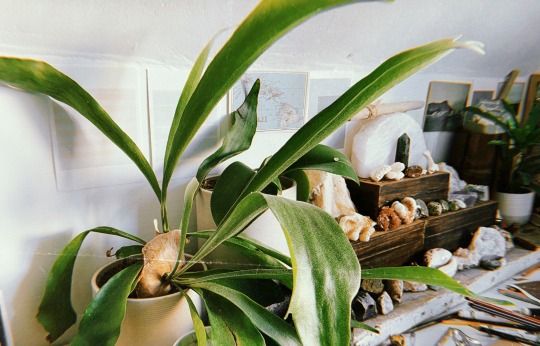
my cosmös .:. @earthjournalbyawildrose
source
#nature#artists on tumblr#art#spirituality#abstract art#fine art#bohemian#my art#abstract painting#boho art#staghorn fern#Fern#Ferncore#plant#plants#Plantcore#Crystal#crystals#Crystal pre#room#bedroom#studio#decor#decoration#altar#witch vibes#witches of tumblr#green witch#witch aesthetic#aesthetic
17 notes
·
View notes
Text
by Dicky, rchrgd.tumblr.com
Daily original photographs and creations selected by the imiging team!

Beneath The Fern
99 notes
·
View notes
Note
For the Reverse Unpopular Opinion meme, Lamarckism!
(This is an excellent ask.)
Lamarck got done a bit dirty by the textbooks, as one so often is. He's billed as the guy who articulated an evolutionary theory of inherited characteristics, inevitably set up as an opponent made of straw for Darwin to knock down. The example I recall my own teachers using in grade school was the idea that a giraffe would strain to reach the highest branches of a tree, and as a result, its offspring would be born with slightly longer necks. Ha-ha-ha, isn't-that-silly, isn't natural selection so much more sensible?
But the thing is, this wasn't his idea, not even close. People have been running with ideas like that since antiquity at least. What Lamarck did was to systematize that claim, in the context of a wider and much more interesting theory.
Lamarck was born in to an era where natural philosophy was slowly giving way to Baconian science in the modern sense- that strange, eighteenth century, the one caught in an uneasy tension between Newton the alchemist and Darwin the naturalist. This is the century of Ben Franklin and his key and his kite, and the awed discovery that this "electricity" business was somehow involved in living organisms- the discovery that paved the way for Shelley's Frankenstein. This was the era when alchemy was fighting its last desperate battles with chemistry, when the division between 'organic' and 'inorganic' chemistry was fundamental- the first synthesis of organic molecules in the laboratory wouldn't occur until 1828, the year before Lamarck's death. We do not have atoms, not yet. Mendel and genetics are still more than a century away; we won't even have cells for another half-century or more.
Lamarck stepped in to that strange moment. I don't think he was a bold revolutionary, really, or had much interest in being one. He was profoundly interested in the structure and relationships between species, and when we're not using him as a punching bag in grade schools, some people manage to remember that he was a banging good taxonomist, and made real progress in the classification of invertebrates. He started life believing in the total immutability of species, but later was convinced that evolution really was occurring- not because somebody taught him in the classroom, or because it was the accepted wisdom of the time, but through deep, continued exposure to nature itself. He was convinced by the evidence of his senses.
(Mostly snails.)
His problem was complexity. When he'd been working as a botanist, he had this neat little idea to order organisms by complexity, starting with the grubbiest, saddest little seaweed or fern, up through lovely flowering plants. This was not an evolutionary theory, just an organizing structure; essentially, just a sort of museum display. But when he was asked to do the same thing with invertebrates, he realized rather quickly that this task had problems. A linear sorting from simple to complex seemed embarrassingly artificial, because it elided too many different kinds of complexity, and ignored obvious similarities and shared characteristics.
When he went back to the drawing board, he found better organizing schema; you'd recognize them today. There were hierarchies, nested identities. Simple forms with only basic, shared anatomical patterns, each functioning as a sort of superset implying more complex groups within it, defined additively by the addition of new organs or structures in the body. He'd made a taxonomic tree.
Even more shockingly, he realized something deep and true in what he was looking at: this wasn't just an abstract mapping of invertebrates to a conceptual diagram of their structures. This was a map in time. Complexities in invertebrates- in all organisms!- must have been accumulating in simpler forms, such that the most complicated organisms were also the youngest.
This is the essential revolution of Lamarckian evolution, not the inherited characteristics thing. His theory, in its full accounting, is actually quite elaborate. Summarized slightly less badly than it is in your grade school classroom (though still pretty badly, I'm by no means an expert on this stuff), it looks something like this:
As we all know, animals and plants are sometimes generated ex nihilo in different places, like maggots spontaneously appearing in middens. However, the spontaneous generation of life is much weaker than we have supposed; it can only result in the most basic, simple organisms (e.g. polyps). All the dizzying complexity we see in the world around us must have happened iteratively, in a sequence over time that operated on inheritance between one organism and its descendants.
As we all know, living things are dynamic in relation to inorganic matter, and this vital power includes an occasional tendency to gain in complexity. However, this tendency is not a spiritual or supernatural effect; it's a function of natural, material processes working over time. Probably this has something to do with fluids such as 'heat' and 'electricity' which are known to concentrate in living tissues. When features appear spontaneously in an organism, that should be understood as an intrinsic propensity of the organism itself, rather than being caused by the environment or by a divine entity. There is a specific, definite, and historically contingent pattern in which new features can appear in existing organisms.
As we all know, using different tissue groups more causes them to be expressed more in your descendants, and disuse weakens them in the same way. However, this is not a major feature in the development of new organic complexity, since it could only move 'laterally' on the complexity ladder and will never create new organs or tissue groups. At most, you might see lineages move from ape-like to human-like or vice versa, or between different types of birds or something; it's an adaptive tendency that helps organisms thrive in different environments. In species will less sophisticated neural systems, this will be even less flexible, because they can't supplement it with willpower the way that complex vertebrates can.
Lamarck isn't messing around here; this is a real, genuinely interesting model of the world. And what I think I'm prepared to argue here is that Lamarck's biggest errors aren't his. He has his own blind spots and mistakes, certainly. The focus on complexity is... fraught, at a minimum. But again and again, what really bites him in the ass is just his failure to break with his inherited assumptions enough. The parts of this that are actually Lamarckian, that is, are the ideas of Lamarck, are very clearly groping towards a recognizable kind of proto-evolutionary theory.
What makes Lamarck a punching bag in grade-school classes today is the same thing that made it interesting; it's that it was the best and most scientific explanation of biological complexity available at the time. It was the theory to beat, the one that had edged out all the other competitors and emerged as the most useful framework of the era. And precisely none of that complexity makes it in to our textbooks; they use "Lamarckianism" to refer to arguments made by freaking Aristotle, and which Lamarck himself accepted but de-emphasized as subordinate processes. What's even worse, Darwin didn't reject this mechanism either. Darwin was totally on board with the idea as a possible adaptive tendency; he just didn't particularly need it for his theory.
Lamarck had nothing. Not genetics, not chromosomes, not cells, not atomic theory. Geology was a hot new thing! Heat was a liquid! What Lamarck had was snails. And on the basis of snails, Lamarck deduced a profound theory of complexity emerging over time, of the biosphere as a(n al)chemical process rather than a divine pageant, of gradual adaptation punctuated by rapid innovation. That's incredible.
There's a lot of falsehood in the Lamarckian theory of evolution, and it never managed to entirely throw off the sloppy magical thinking of what came before. But his achievement was to approach biology and taxonomy with a profound scientific curiosity, and to improve and clarify our thinking about those subjects so dramatically that a theory of biology could finally, triumphantly, be proven wrong. Lamarck is falsifiable. That is a victory of the highest order.
2K notes
·
View notes